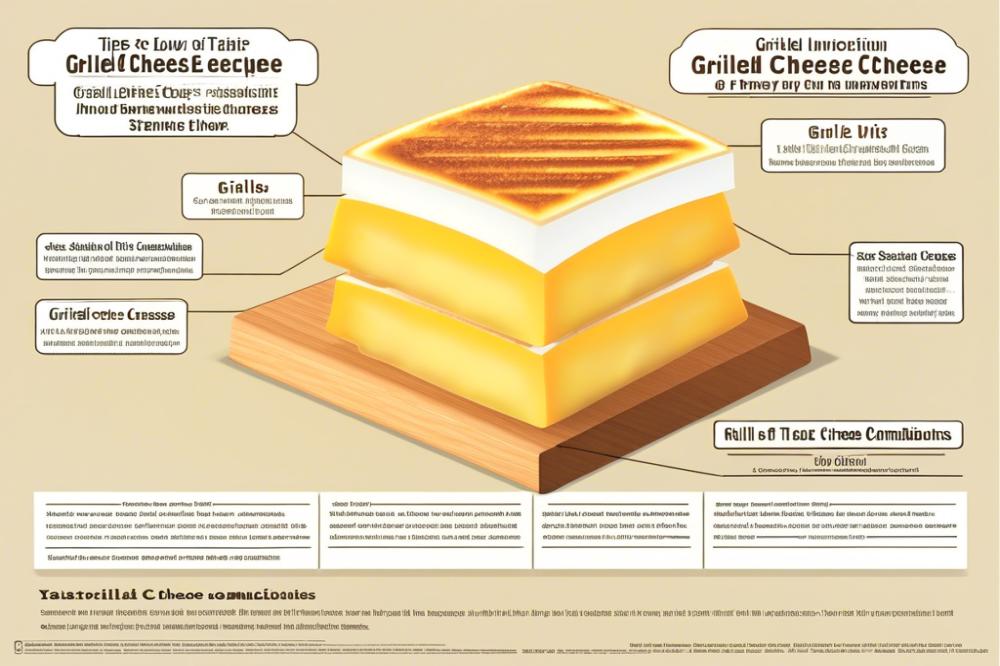Introduction
grilled cheese sandwiches have become a quintessential comfort food, beloved by many across various ages. These simple creations consist of melted cheese nestled between two slices of crispy, toasted bread. While the fundamentals remain unchanged, the depth of flavor and texture can greatly vary. They offer a fascinating intersection of nostalgia and culinary creativity.
Popularity stems from their accessibility and ease of preparation. Quick to assemble, these sandwiches are perfect for a late-night snack or a lunchbox classic. Whether it’s a busy parent seeking a fast meal, or a college student looking for a satisfying bite, this dish remains relevant in diverse kitchens.
Variations abound, illustrating the adaptability of the basic concept. From gourmet takes featuring artisanal cheeses and specialty breads to creative twists incorporating ingredients like avocado or bacon, there’s a multitude of ways to experiment. For those in search of something different, sandwich recipes often provide an avenue to explore international flavors, such as the French Croque Monsieur or the Mexican Quesadilla. Each iteration expands the horizons of this humble dish, showcasing how grilling cheese can transcend its simple roots.
The Ultimate grilled cheese

Key ingredients for a perfect grilled cheese
Choosing the right ingredients is critical. Start with bread that can stand up to grilling. Sourdough, whole grain, or even brioche can provide great flavor and texture. Next, select cheese varieties that melt well. cheddar, Gruyère, and Fontina are all excellent choices. For a bit of funk, consider adding a slice of blue cheese for surprising depth. Butter or mayonnaise can be used for the outer layer to achieve that delicious golden crust. Seasonings such as garlic powder or fresh herbs can elevate the overall taste.
Step-by-step cooking instructions
Begin by preparing your ingredients. Slice the cheese to ensure even melting. Next, spread your chosen fat on one side of each slice of bread. Heat a skillet over medium-low heat. Place one slice of bread, butter-side down, in the skillet. Layer the cheese evenly atop that slice, then cover with the other slice, butter-side up. Cook until the bottom is golden, about three to four minutes. Flip the sandwich carefully, pressing down slightly with a spatula. Continue cooking until the other side is also perfectly browned, and the cheese has melted fully.
Tips for enhancing flavor and texture
Adding textures can transform a simple sandwich. Consider incorporating ingredients like caramelized onions or sliced tomatoes inside the filling. A sprinkle of crushed red pepper flakes lends a subtle kick. Experimenting with different cheese blends can yield fascinating results as well. Don’t hesitate to try a dash of mustard for an unexpected zesty note. Storing leftovers becomes easier by cutting the sandwich into smaller pieces. Reheating in an air fryer rather than a microwave maintains crispiness. Each of these strategies enhances that classic comfort while introducing something fresh.
sandwich recipes

Exploring creative combinations for this classic dish can yield delightful results. Start by considering different types of cheese for more flavor. cheddar remains a favorite, but why not try an aged gouda or a creamy brie? Experimenting with smokey pepper jack can add a tantalizing kick.
For bread, the options are plentiful. Sourdough provides a tangy base that contrasts well with rich cheeses. Whole grain varieties contribute a nutty flavor, while a simple white loaf offers a blank canvas. Even unleavened breads, such as tortillas, can transform the experience.
Flavor Infusions
Adding ingredients can elevate a sandwich to new heights. Fresh basil or a hint of pesto introduces aromatic herbal notes. Consider layering slices of ripe tomato or avocado for a creamy texture. Sweet fig jam works wonderfully with strong cheeses, creating a balance of savory and sweet. Don’t overlook the power of crispy bacon or caramelized onions; they can deepen flavors.
Accompaniments
Side dishes and accompaniments play a crucial role in crafting a complete meal. A simple bowl of tomato soup is a timeless pair, evoking nostalgia in each spoonful. For something with a crunch, a side salad featuring mixed greens, cucumbers, and a light vinaigrette refreshes the palate nicely. Sweet potato fries, with a sprinkle of paprika, provide a satisfying alternative to traditional potato wedges.
Pickles on the side offer a delightful contrast, with their sharpness cutting through the richness of melted cheese. Consider serving a tangy coleslaw to add crunch and acidity to balance flavors. Finally, a quality craft beer or a fruity soda can enhance the taste experience, making the meal feel more special.
Nutritional Information

A traditional grilled cheese sandwich delivers a delightful mix of flavors, but it’s also worth examining its nutritional value. Typically, this comfort food consists of two slices of bread and a generous portion of cheese, usually American or cheddar. A simple recipe often contains around 300 to 400 calories, with most of those calories coming from carbohydrates and fats.
Nutritional breakdown of a classic grilled cheese
Carbohydrates from the bread serve as a primary energy source. Two slices can contribute approximately 40 grams. While cheese adds protein, boasting about 12 to 15 grams per serving, the fat content usually stands around 20 grams. Saturated fat levels can be high, especially with processed cheeses. Salt also creeps in. A classic sandwich may contain upwards of 800 milligrams of sodium.
Analysis of health benefits of the ingredients used
Cheese, despite its fat content, presents some health benefits. Rich in calcium, it supports bone density and can promote oral health. Furthermore, certain cheese varieties contain probiotics that benefit gut health. Whole grain breads can elevate fiber levels, enhancing digestion and providing longer-lasting energy. Various toppings like tomatoes or spinach can increase vitamins and antioxidants, further enhancing the dish’s nutritional profile.
Tips for making healthier grilled cheese options
Opting for whole grain or sourdough bread elevates fiber content compared to standard white bread. Choosing low-fat cheese or alternatives can significantly lower calories and saturated fats. Experimenting with fresh vegetables not only adds flavor but also boosts nutrients. Herbs or spreads can replace butter to reduce unhealthy fats while providing flavor. Cooking with olive oil or avocado oil is another excellent choice, introducing healthy fats and additional flavors. It’s all about finding balance and making mindful choices without entirely sacrificing enjoyment.
Embracing the Comfort of Grilled Cheese
Grilled cheese sandwiches hold a special place in the hearts of many. That melty combination of cheese between crispy, golden bread evokes warmth and nostalgia. It’s more than just a meal; it represents simplicity and comfort. The beauty of this dish lies in its versatility. Cheddar, mozzarella, or even goat cheese can create different flavor experiences that cater to various palates.
Consider exploring the myriad of variations available. Why not try an Asian twist with kimchi and spicy mayo? Or perhaps a Mediterranean flair, incorporating fresh tomatoes, basil, and mozzarella? Each addition can elevate the basic concept and add layers of flavor that could surprise even the most seasoned food lover.
Make room in your kitchen for creativity. Seek out unique recipes online or in cookbooks focused on enhancing this familiar dish. Creating a gourmet version could become an exciting weekend project or a delightful weeknight dinner.
Never underestimate the power of a perfectly crafted sandwich. It can serve as a quick lunch or a more elaborate dinner with the right accompaniments. Whether you’re keeping it classic or experimenting with new ingredients, the joy of grilling cheese is always within reach. Enjoy every bite and embrace this simple pleasure whenever you crave something comforting.



